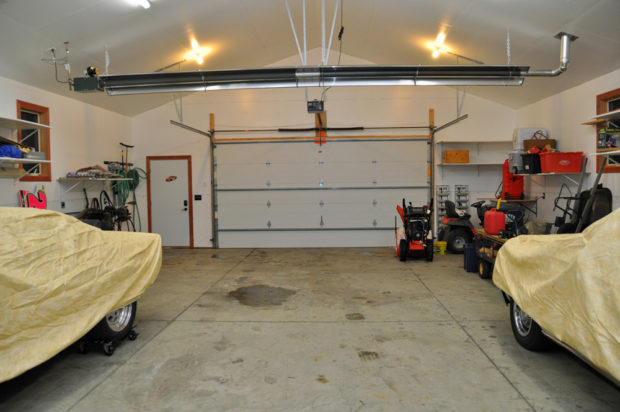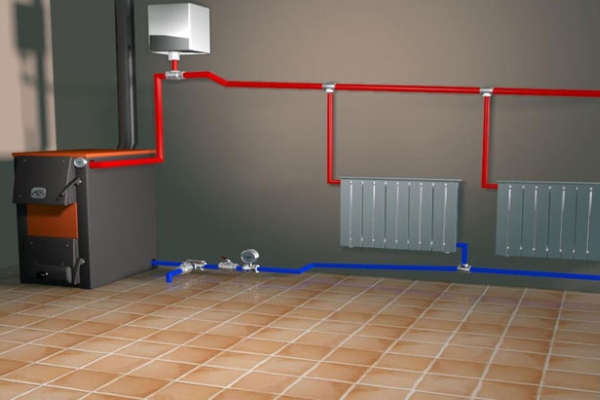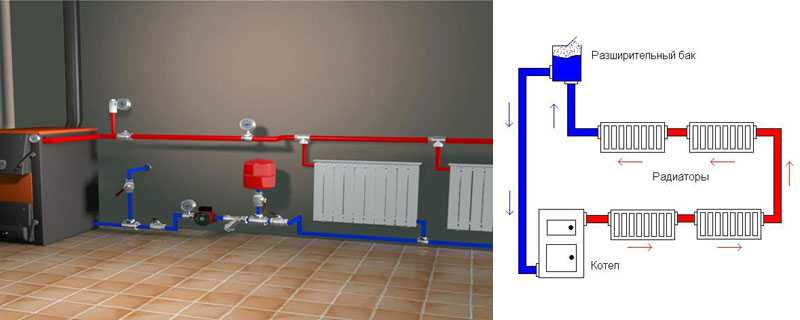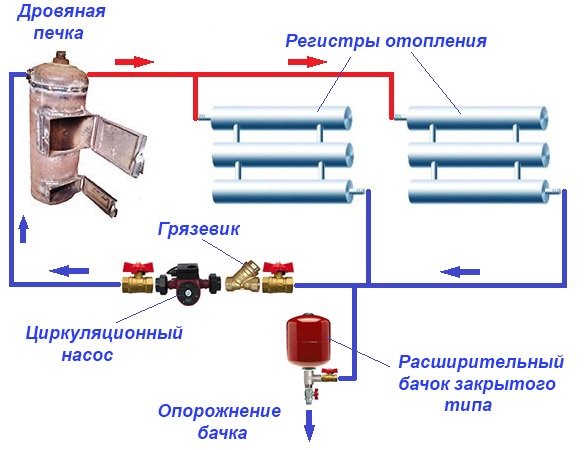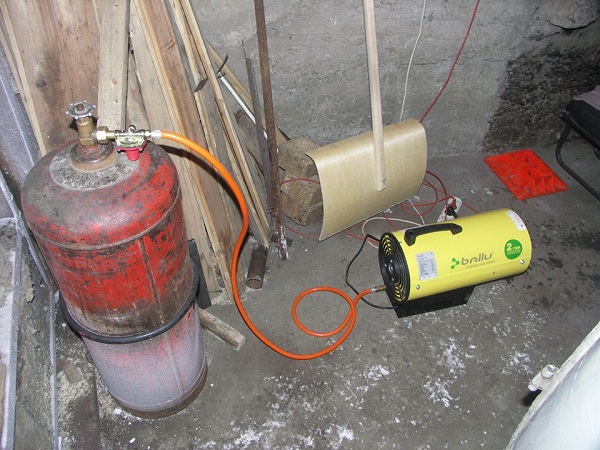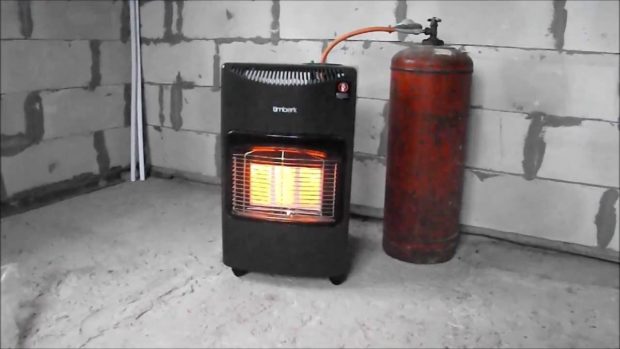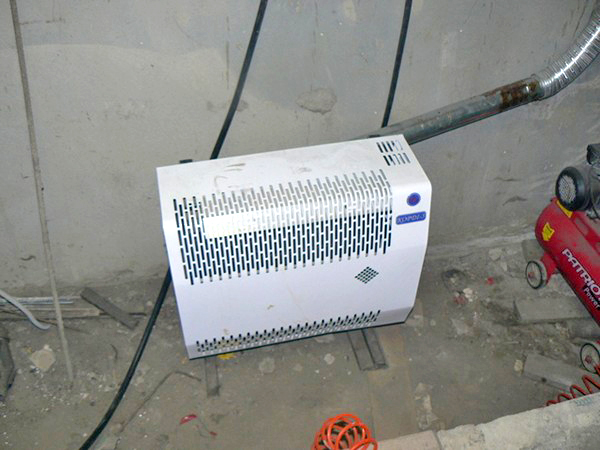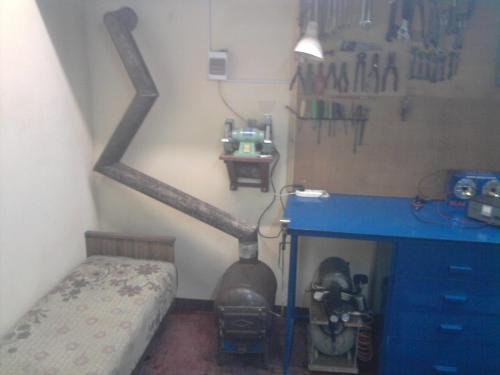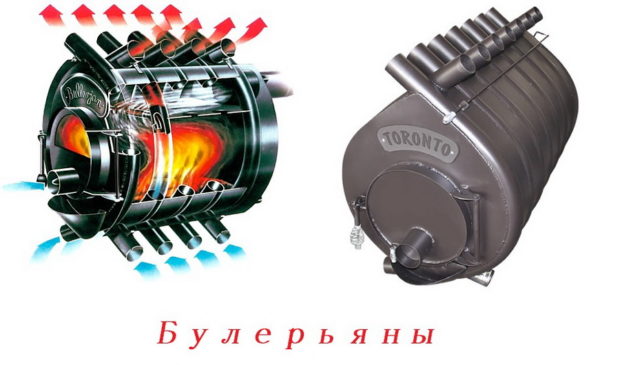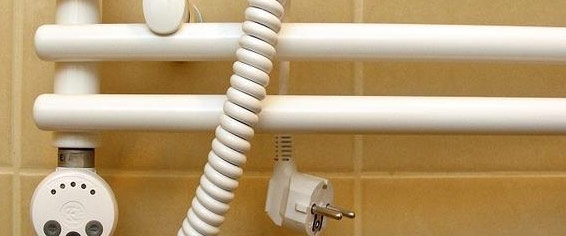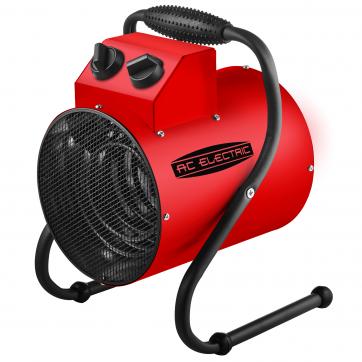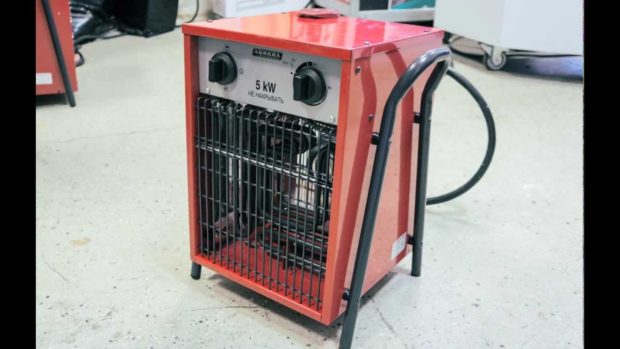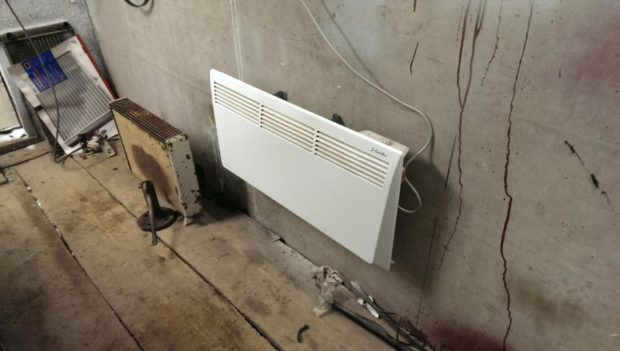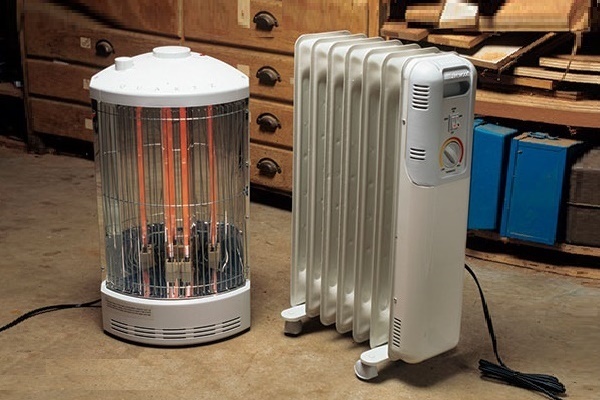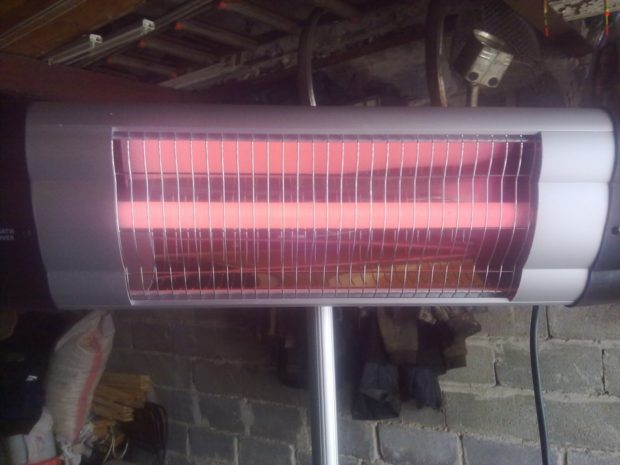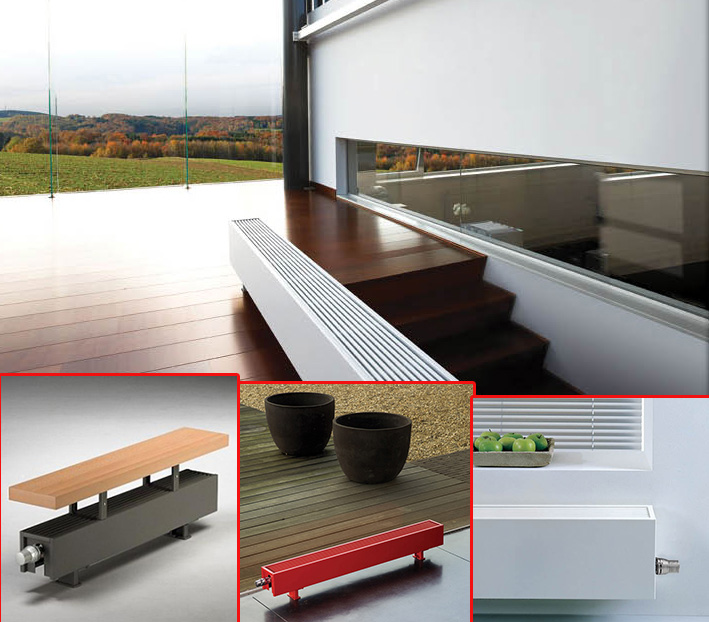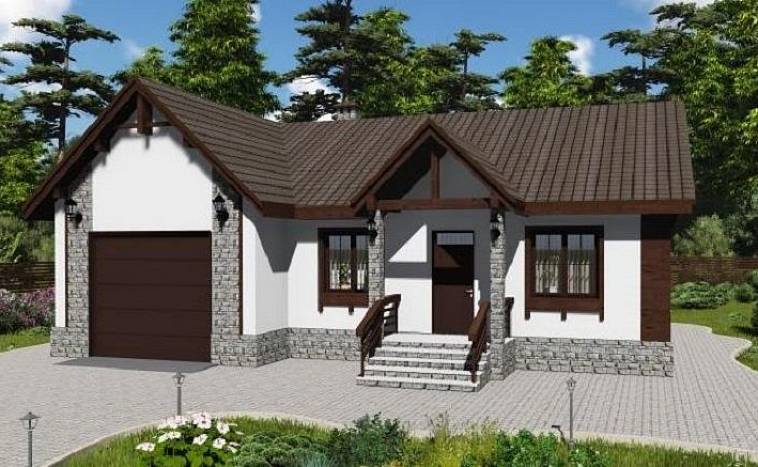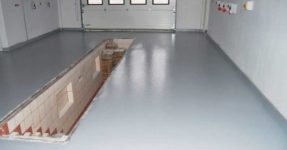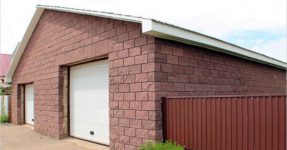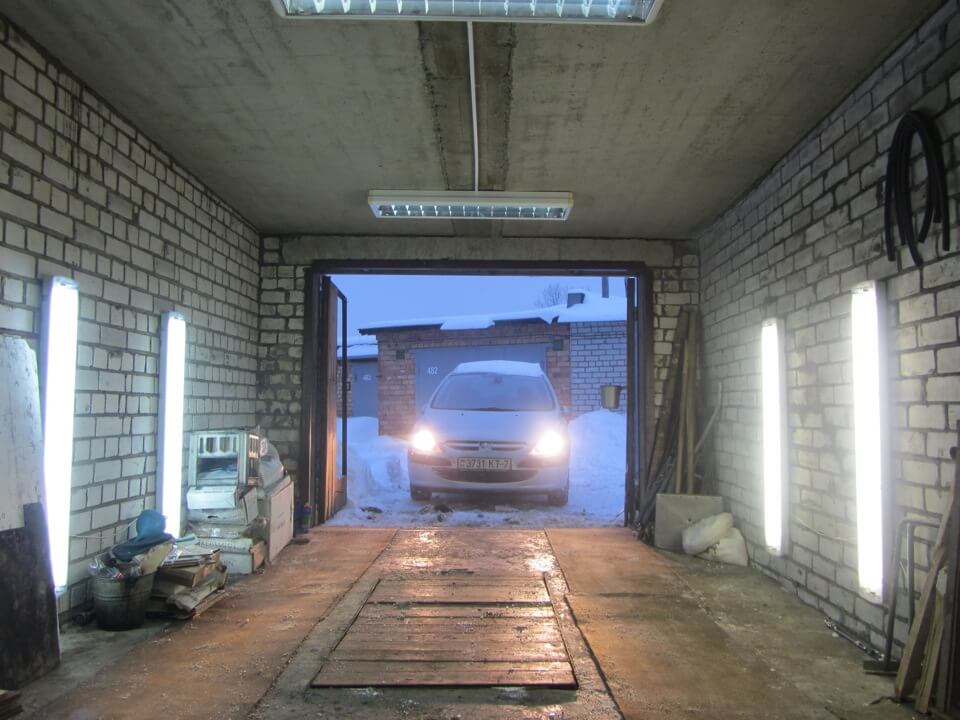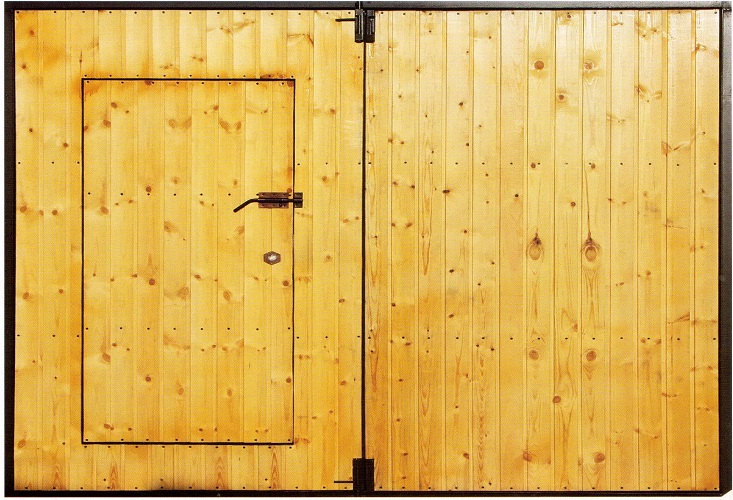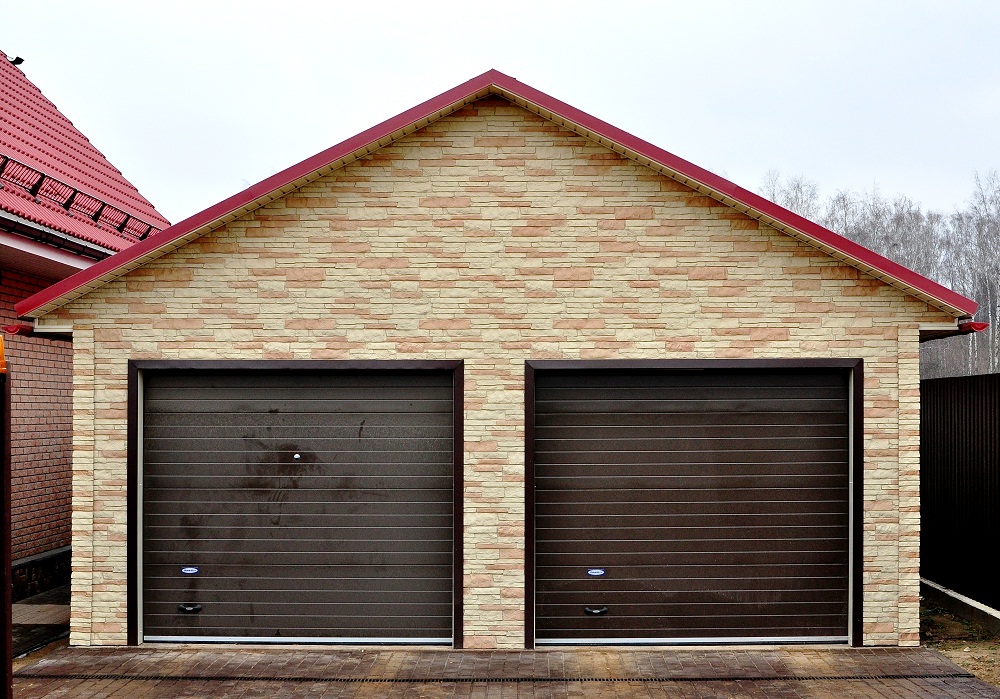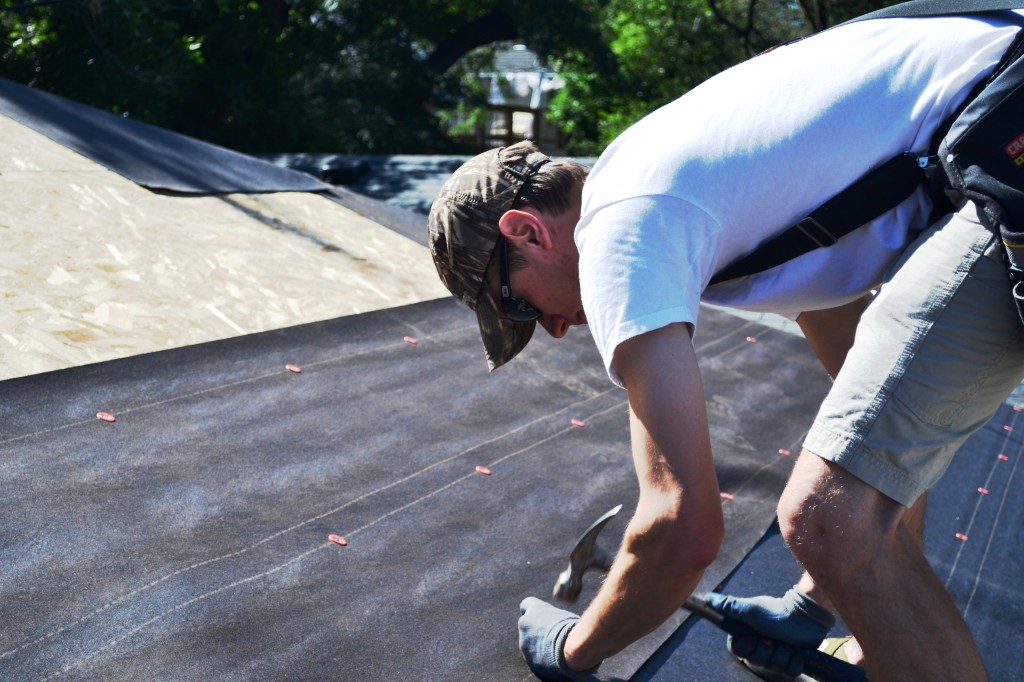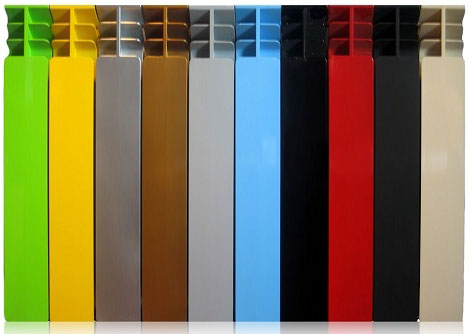Do-it-yourself garage heating: 6 economical ways to heat a garage
What is a garage for a car owner? This is not only a parking lot, but also a workshop, and sometimes even a place for relaxation and solitude. In winter, when the temperature drops below zero, in an unheated garage it becomes uncomfortable for a person and not entirely safe for a car. There is only one way out - to organize a garage heating with your own hands. Any normal car owner is trying to find the cheapest way to do this. Alas, one universal solution does not exist - the choice depends on many factors. We will consider the most economical ways of heating the garage so that everyone can choose the best option.
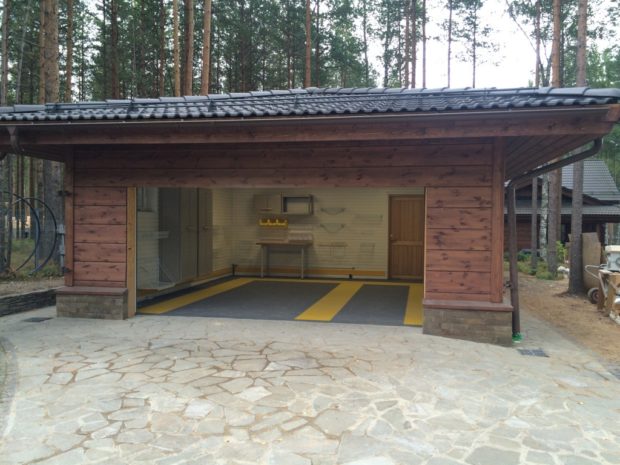
Does the garage need heating?
It is necessary to organize a garage heating system, at least for the following reasons:
- at a temperature below +50It is uncomfortable to carry out maintenance work;
- with prolonged exposure to negative temperatures, the performance of oil and some other technical fluids deteriorate, which leads to difficulties when starting the engine and accelerated wear of parts;
- in a heated garage, the air is drier, which reduces the risk body corrosion.
It is not necessary to heat the air in the garage to the same high temperatures as in the living room - +150Enough for the implementation of all tasks assigned to the heating system.
What should be envisaged at the preparation stage?
Garage made of metal, bricksconcrete or sandwich panels - This is a design with high heat loss. If you do not foresee reliable thermal insulationthen you will heat the street. Best set up external insulation of the garagebut if it is impossible to fulfill, then you can do internal insulation. Thermal insulation requires not only walls, but also goalas well as gender.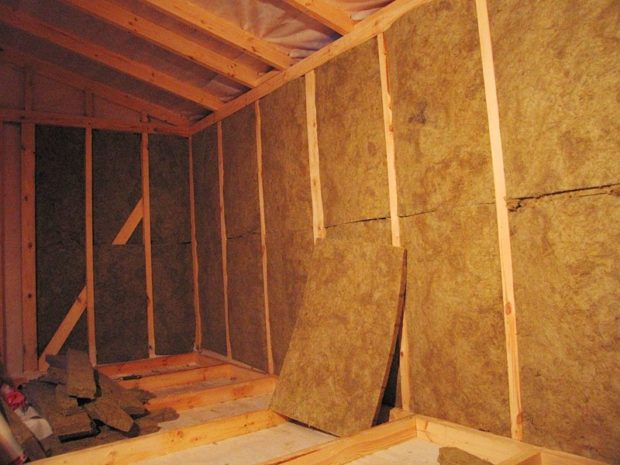
The heating system must be safe.. The garage stores a mass of flammable liquids and objects, so the organization of heating must be taken with all responsibility:
- at the planning stage make a garage diagram, it is necessary to note the place of storage of fuel and lubricants. This warehouse should be located as far as possible from the heater and be located at some elevation. The plan also marks the place where the pipe exits through the ceiling or wall, unless, of course, the selected heating system provides chimney organization. It is also worth noting the wooden surfaces nearby the heating equipment - they are covered with sheets of galvanized steel. Remember to make room for a fire extinguisher. If a system using combustible fuel is selected, it will not be superfluous to provide a place for a box with asbestos cloth;
- the floor and walls around the heating appliance should not be flammable;
- the heating system must not be left unattended;
- wiring must be grounded;
- it is important to provide reliable ventilation so as not to become another victim of carbon monoxide poisoning;
- it’s better not to store all the trash in the garage that couldn’t find a place at home - these are the things that become food for fire;
- it is better to smoke outdoors or, at least, as far as possible from heating appliances;
- electrical systems are not suitable for damp rooms;
- It will not be superfluous to install the simplest smoke detectors to secure your own property and neighboring garages.

Criteria for choosing a heating system for the garage
If the garage is attached to the house, then it is unlikely to freeze due to the heat transfer of the building. In this case, the best connect the garage to the common water heating system of the house. The load on the boiler will be higher, therefore, it is optimal to immediately equip the heating for the garage and living space in order to choose the right equipment. The number of radiators in the garage depends on its size.
However, it is not always possible to connect the garage to a home heating system, even if it is attached to the building. What can we say about those garages that are far from home. In this case, you have to equip autonomous heating systemwhich choose taking into account the following factors:
- installation and operation costs;
- the availability of a particular type of fuel. For example, in areas where frequent power outages, the option of heating with a convector or heat gun just disappears;
- installation complexity;
- required heating power. Heat a large garage with electric heatersat least stupid;
- Fire safety;
- operation features. For example, solid fuel boilers need constant supervision and frequent loading of fuel.

A few decades ago, almost the only possible way to warm the air in the garage was a stove. Fortunately, today there are many more convenient and practical options.
DIY heating in the garage can be created in the following ways:
- water heating with a boiler;
- the use of gas heaters;
- use of solid fuel and diesel boilers;
- electric heating;
- air heating;
- mining furnaces.
Again, the ideal option does not exist - it is selected in each individual case, taking into account the mass of factors.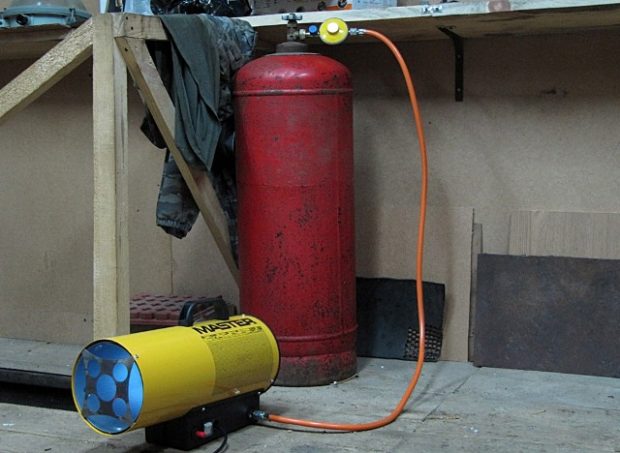
No. 1. Water heating system
Water heating system organized in a garage by analogy with residential premises. The heat carrier is heated in the boiler, and then it passes through the pipes and radiators, evenly warming up the entire garage. After stopping the heat supply, the pipes remain heated for another couple of hours. This is the main advantages this system.
The main minus - the complexity of the organization. In addition, the water in the heating circuit may freeze, so if the system is not involved in the coming days, it is better to drain the water. On the other hand, frequent water changes lead to rapid corrosion of pipes and radiators. To avoid this problem, it is better to use metal-plastic equipment. It’s better not to use ordinary water in the heating system - it is replaced by antifreezenon-freezing coolant.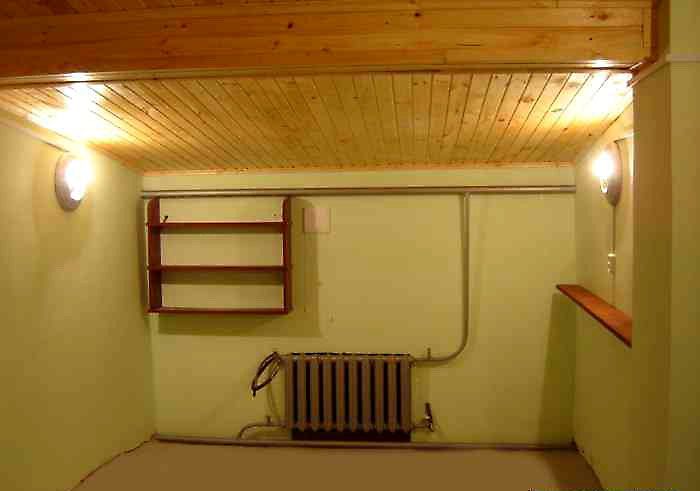
The complexity of the arrangement turns into another drawback - a high price. The most economical way to heat a garage is obtained if its circuit is connected to a home boiler. The costs of general heating will increase, but it will still be cheaper than organizing an independent heating system.
If it is impossible to connect to the home system, you will have to install a separate boiler. It can run on different fuels. The following types of boilers are used in the garage heating system:
- electric boiler easier to install, as safe as possible, but expensive in terms of operation. Even if you are not afraid of electricity bills, you should not use such boilers in areas with frequent power outages, power surges, and also in regions with severe windy winters, because the wires can break, which ultimately leads to freezing of water in the system. If you do not have time to drain the water in time, then the pipes may burst;
- gas boilers they are rarely used in garages, as access to the gas pipeline is not always available. If the gas pipe runs nearby, you are very lucky - gas heating will be inexpensive, and in terms of operation, such systems are quite simple. The main thing is to follow safety precautions;

- liquid and solid fuel boilers. You can choose a stove with wood, coal, diesel or used oil - it all depends on which resource is more available in your case. Solid fuel boilers need constant monitoring and frequent loading of fuel. Pyrolysis and pellet units are more convenient in this regard, but they are not cheap, the most economical option is a potbelly stove, which can also be used in a water heating system.

For all boilers, except electric, you will have to organize a chimney. In addition to the boiler, radiators, heating pipes and chimney pipes, you will need a circulation pump and an expansion tank. It all costs money, so use a water heating system makes sense only in large garages. Often such heating is done at service stations and in commercial car repair shops. If the garage is small, then it makes no sense to organize such a complex water heating system - this is an option for more or less spacious rooms where constant heating is required.
Principle of operation The water heating system is quite simple. The coolant heats up, passes through the pipes, gives off heat and returns to the boiler. System may be single or double pipe. A one-pipe system is much easier to organize and cheaper; it is best suited for a small private garage. In this case, the heated coolant flows sequentially to the radiators, i.e. in the first radiator the temperature will be higher than in the last, where the antifreeze reaches already cooled down. The two-pipe system allows for more uniform heating, but much more materials will be needed.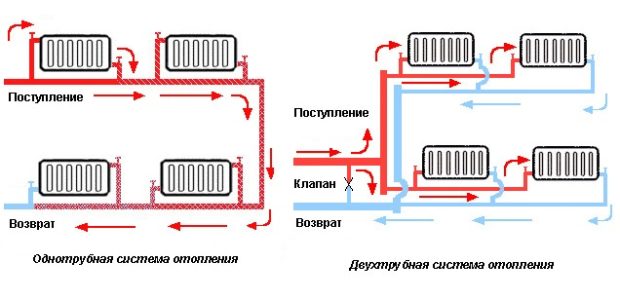
Even if the garage is not attached to the house, but is nearby, you can try to connect it to a home heating system, but there are limitations. The distance from the garage to the house should not be more than 20 m, and the pipes must be properly insulated.
If antifreeze is used as a heat carrier (liquid that does not freeze even at -450C), then you need to work with it carefully, because it is a toxic substance that becomes even more dangerous when warmed up. Antifreeze is not recommended for use in two-pipe systems. The coolant is replaced every 5 years.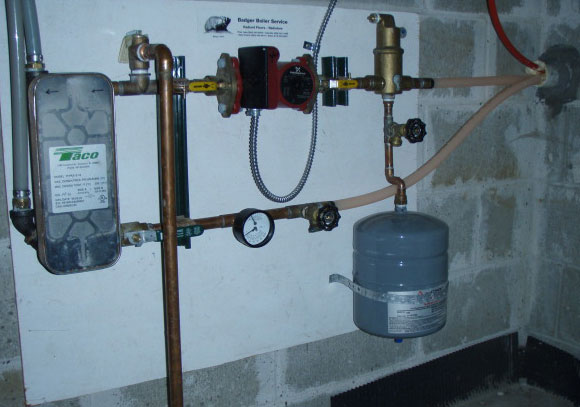
No. 2. Gas heating
Gas is a much more economical fuel than electricity. It can be used for burning in a heating boiler, but this will require the presence of a gas main and the preparation of a number of documents, it will still be necessary to pay the cost of the tie-in, and this is not counting the costly installation of the heating system itself. As mentioned above, this is an option only for spacious garages that need to be heated almost constantly.
When there is no access to the main gas pipeline, you can use liquefied bottled gas. For safety reasons, cylinders are installed in metal crates above the floor at least 20 cm and away from flammable objects. You can have a supply of cylinders, but for this you need to allocate space. Most cost one cylinder, which is periodically transported to the gas station.
The following types of equipment can be connected to a gas cylinder:
- a heat gun equipped with a gas burner. Heated air is distributed throughout the room using the built-in fan. In this way, you can warm up the garage very quickly, but the air will also cool down very quickly;

- ceramic gas heater Heats not air, but objects that subsequently warm the air in the room;

- gas convector heats the air by changing its properties with increasing temperature.Cold air passes through a heat exchanger, heats up and enters the room. Warm air is lighter than cold, so it rises immediately, giving way to unheated, which is sucked in by a convector. To circulate air faster, the convector is often equipped with a fan. The body of the device and the heat exchanger are made of durable heat-resistant materials, because inside the gas will constantly burn. The lower the convector is installed, the better. The room will warm up quickly, but just as quickly and cool.

Minus of similar heating - the formation of combustion products that do not go anywhere and remain in the garage. Reliable ventilation or regular ventilation is indispensable.
No. 3. Solid fuel heating
It is profitable to heat with coal, wood, peat, pallets - the fuel is cheap, and its heat transfer, although lower than that of gas, is still quite high. For the combustion of solid fuels, stoves, stoves and boilers are used.
The common minus of all solid fuel furnaces - the need to equip a place for fuel. It is also important to ensure constant control over the amount of fuel in the furnace. This adds care to keep the chimney and furnace clean, but the heat itself comes out very cheap. Solid fuel boilers and brick stoves are placed only on a solid non-combustible base.
Potbelly stove for garage heating
Potbelly stoves are the most primitive stoves that began to be actively used at the beginning of the last century. Then their popularity fell sharply due to the spread of district heating. However, potbelly stoves are still used, because it is almost the cheapest way to heat a garage.
The stove is a potbelly stove made of metal. A large part is occupied by a chamber where fuel is thrown. The room warms up due to the contact of the walls of the stove with the surrounding air. Far from the last role is played by the pipe, which also accumulates heat. So that the heated combustion products do not immediately fly out into the street, a pipe of a clearly defined diameter is used, due to which warm gases make several revolutions in the vertical plane. This allows maximum use of the heat of combustion of the fuel (efficiency reaches 60-80%) and efficiently suck in the air necessary for the fuel to burn completely. The diameter of the pipe in mm should be 2.7 times larger than the volume of the stove in liters.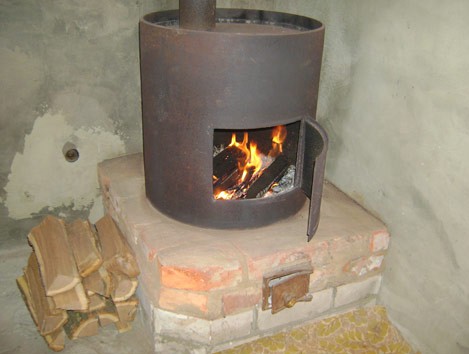
It is important that the chimney has a complex shape: first comes the vertical insulated part, then horizontal or inclined, the so-called Hog, which provides up to a quarter of the heat received, because here flue gases burn out. Potbelly stoves are sold ready-made: there are both the simplest and most primitive options, as well as confused designer ones. If you have skills, you can assemble a potbelly stove yourself from a barrel or sheet metal.
Benefits:
- a potbelly stove can be heated with any solid fuel, but firewood is usually used;
- low price and low cost in terms of operation;
- relatively high efficiency;
- allows you to quickly warm up the room and dry the air in it;
- There are models that can be used as a stove. Useful for those who spend in the garage even too much time.
Minuses:
- the need for continuous monitoring of work;
- high fire hazard;
- suitable only for small rooms;
- the air cools quickly;
- from a specific smell will not get rid;
- the need for regular cleaning of the chimney.

Solid fuel boiler
This is a more expensive, but at the same time, safer and more effective solution. The principle of operation is simple: fuel is burned in the furnace, a tank with a coolant is heated, which is supplied through pipes and radiators. Fuel has to be thrown regularly (approximately every 5 hours), so today they are increasingly used advanced types of boilers:
- pyrolysis boiler It has two combustion chambers, in the first firewood smolders at high temperatures due to the fact that the amount of air is insufficient.The product of combustion is pyrolysis gas, which is burned in the second chamber, generating much more heat than just wood. The boiler efficiency increases to 90%, and one portion of firewood is enough for 10-13 hours;
- pellet boilers drown on granules obtained from wood waste. They are placed in a bunker, from where they are fed into the furnace in doses. The boiler efficiency reaches 95%, fuel can be loaded once every few days.
The body of solid fuel boilers is made of cast iron or steel. Pyrolysis and pellet boilers, of course, are very convenient, but they are expensive. If the funds allow, such an acquisition can be afford - it will soon pay off.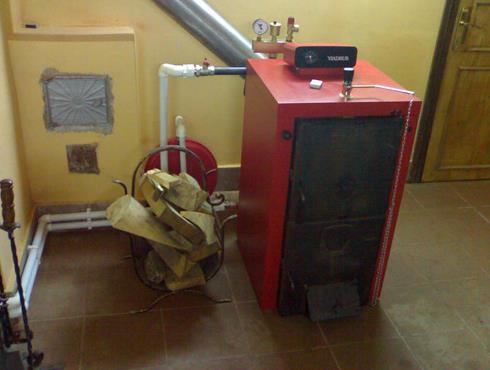
Brick oven
Build in the garage brick oven - a long, expensive and painstaking task. Fuel for such a stove is usually firewood, but coal can also be used. The principle of heat is the same. The fuel burns out, heats the walls of the stove, and they heat the air. A good option for small rooms. Brick warms up longer than metal, but cools down more slowly.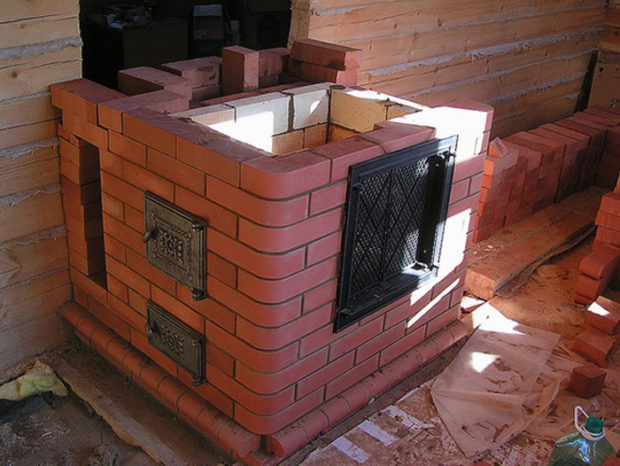
Buleryan furnace
Often, the Buleryan stove is confused with a stove and a conventional wood stove. She really absorbed a little of both. The principle of operation is convection. The design assumes the presence of pipes at the base of the furnace and in the upper part. Cold air enters through the lower part of the furnace, receives heat from the chamber where the fuel is burned, and leaves already heated through the upper part. Pipes are 2/3 soldered into the furnace body to maximize heat transfer. The special design of the furnace and chimney allows you to take maximum heat from the combustion of fuel. A significant role here is played by the presence of a chamber for pyrolysis combustion of fuel. Combustion products are removed through a chimney.
Benefits:
- quick heating of the room due to convection and heat transfer from the furnace surface;
- compactness;
- there is no need to often add firewood;
- higher safety in comparison with a potbelly stove.
Minuses:
- cost;
- the complexity of arranging the chimney;
- the need for frequent cleaning of soot.

Number 4. Electric garage heating
Electric heating is the easiest to arrange, but you have to pay a lot for this convenience.
Benefits:
- simplicity and high speed of arrangement. It is enough to buy a heater and plug it into a power outlet;
- large selection of heating appliances;
- lack of combustion products, so the chimney is not needed;
- high level of security;
- high heating rate;
- simplicity of adjustment of temperature.

There are also minuses:
- prolonged heating with electricity will become a penny;
- not suitable for regions with interruptions in the supply of electricity;
- quick cooling of the room after turning off the heating;
- low durability of equipment.
Most often, the following electric heaters are used to heat the garage:
- heat guns - This is a more powerful analogue of a household fan heater. Cold air passes through the heater, warms up and is blown into the room using a fan. You can put the heat gun anywhere, it is mobile and allows you to adjust the degree of heating. There are very powerful models that need to be connected to a 380 V network. The gun is capable of raising dust into the air, this is especially noticeable in small garages, so the room will have to be kept clean;

- fan heater inferior in terms of power to the heat gun, costs the least, dries the air. For them, as for guns, a rather high noise level is characteristic. Ceramic fan heaters are more durable, economical and comfortable in terms of operation than spiral counterparts;

- convector - This is a heating element in a housing with holes. The room warms up due to the heat transfer of the body and the release of warm air through the holes. Many models are equipped with wheels for easier movement. The convector heats the room more slowly than the heat gun, but after shutting down the case cools down for a long time. Another minus is a higher price;

- oil heater It is more complicated than a convector. Here the heater first heats the oil, then the oil heats the case, and the case is already warming the air. The room heats up for a long time, so for the garage this is not the best option;

- IR heaters heat surfaces and objects, which then heat the air. A person becomes warm immediately. By the same principle, the sun warms the planet. Such devices consume a minimum of electricity, but they become very hot during operation - be careful if the garage is small. It is better not to direct the rays at the car;

- inverter split systems - A fairly economical way to get heat, but the equipment itself is very expensive. The system can operate at a temperature not lower than -200FROM.
Electric heaters are suitable for temporary heating of a garage: they planned to do some work, turned on the heater, did everything and turned it off. It won’t hit the wallet, and you won’t have to bother with the kindling and chimney. If the garage is a workshop where you spend time regularly, then this method of heating is not for you.
No. 5. Oil heating
Fuel can become used oil and diesel. If you need to warm up a car repair shop where used oil is always available, then this is a very good option. You can make a heater for yourself. It is based on two chambers: in one, fuel burns out, in the other, gas burns out. For the manufacture of gas cans, tanks and pipes. As a result, a large amount of energy is generated.
Main plus waste oil furnaces - the minimum cost of fuel, and sometimes its full free. Minus - the formation of a large amount of soot and soot, so the equipment needs regular cleaning. In addition, to kindle such an oven is quite difficult, the first time it doesn’t always work, and if you come to a cold garage and act with cold hands, the task becomes more complicated. There are also requirements for the installation of the chimney - it must be at least 4 m in length, have a slope.
If the existing skills are not enough to assemble the furnace, you have to buy it, it costs about like a gas boiler. Some models are quite sensitive to fuel supply. In addition, to ensure the uninterrupted operation of the equipment, it is necessary to have a fuel supply. The average consumption of mining - 1 l / hour.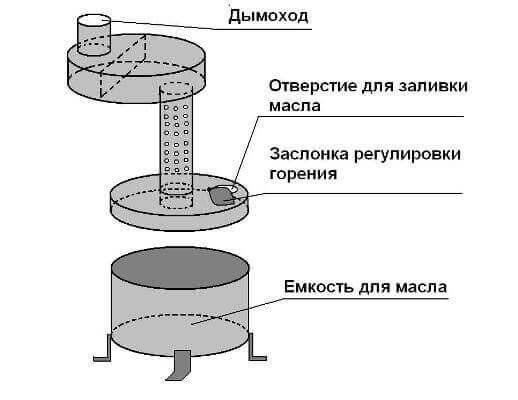
No. 6. Air heating system
Air heating is rarely used. For its organization, it is necessary to provide a duct system with deflectors, where hot air gets from a heat gun or fan heater.
This heating option allows you to quickly dry all the air in the garage and thereby protect the car from the harmful effects of high humidity. Due to the complexity of the organization, the system is rarely used.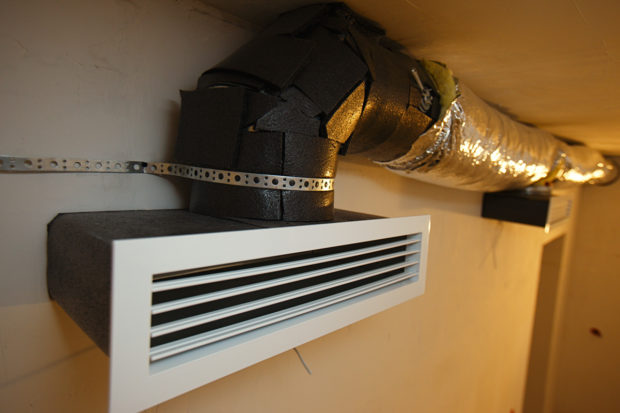
In conclusion, we note that, trying to save on heating, always think about safety measures.

